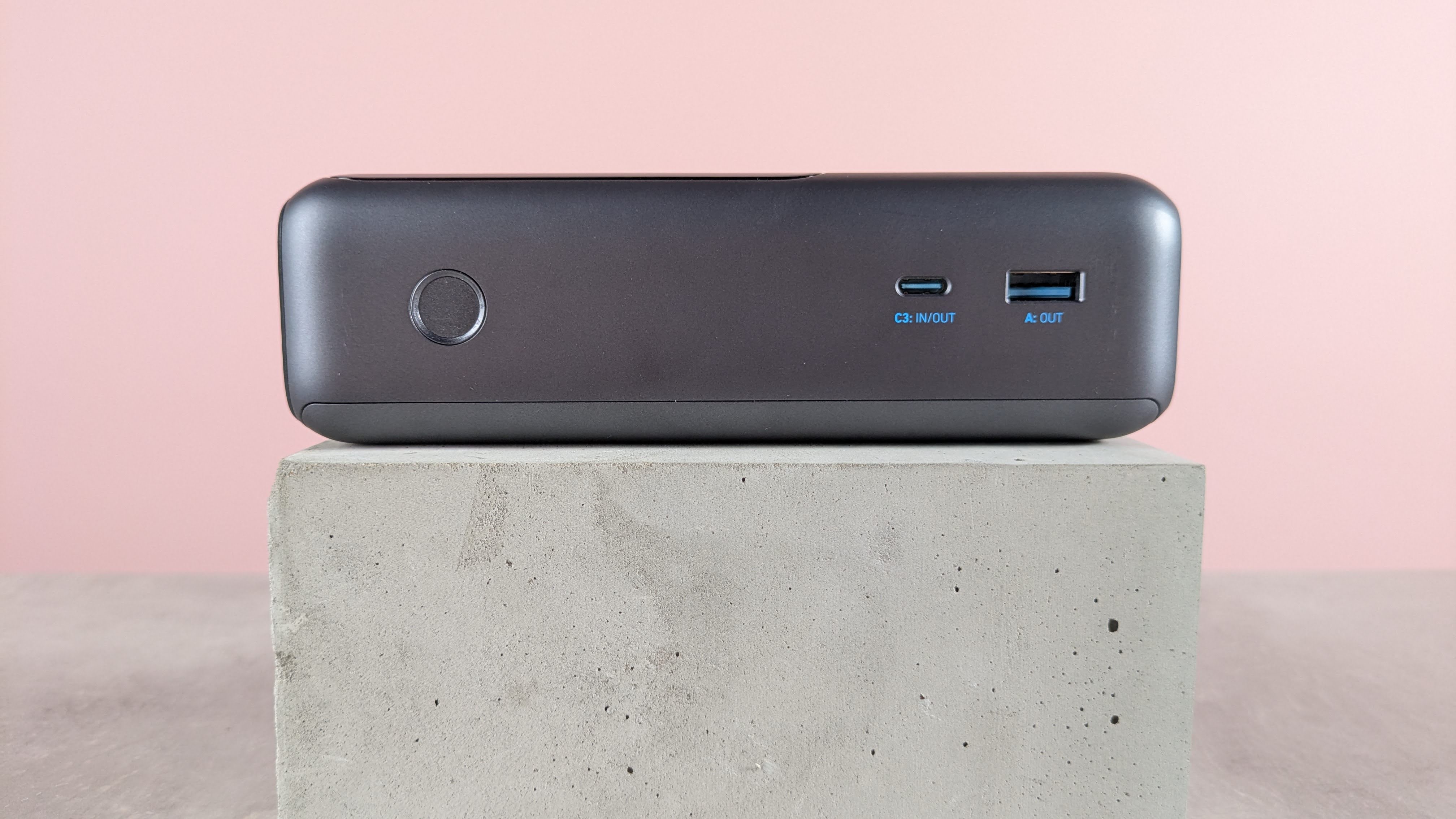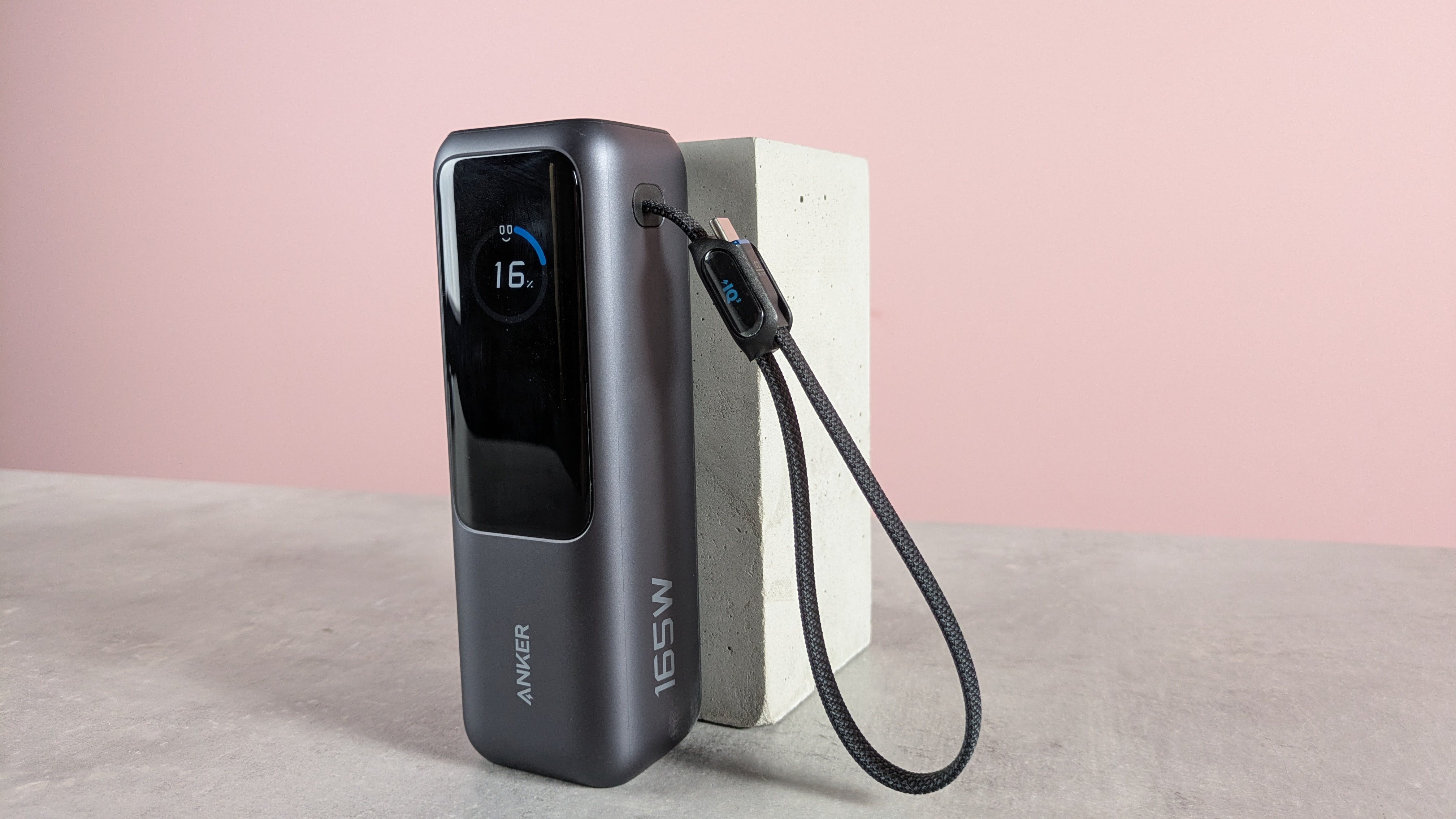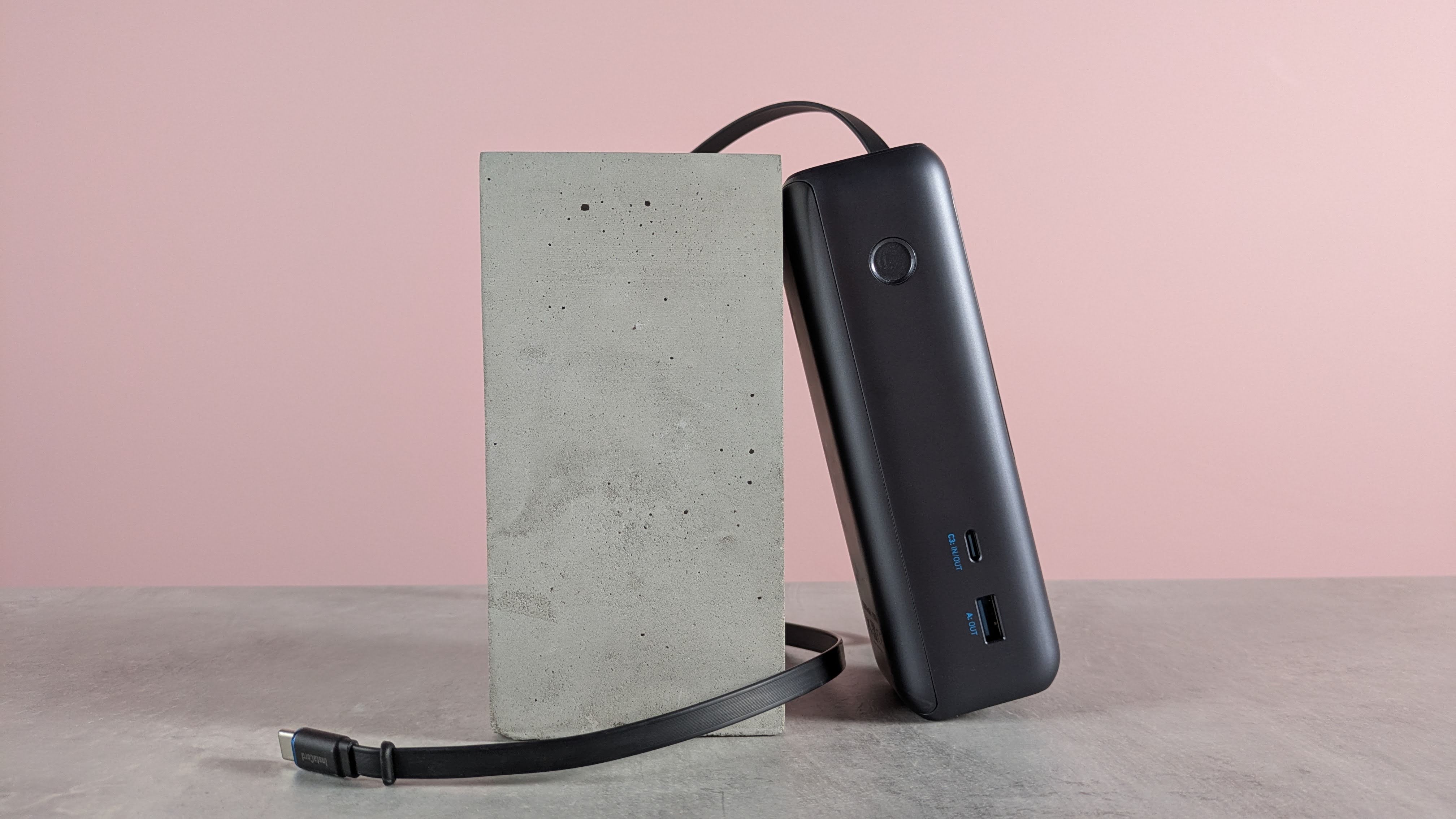TechRadar Verdict
The Anker Laptop Power Bank is largely successful in catering to heavy users. The two inbuilt cables, one of which doubles as a carrying strap, are hugely convenient features, as is the indepth display information. It might not be the easiest to carry around, and nor is it exactly cheap, but considering the spec and superb build quality, it’s still great value.
Pros
- +
Plenty of power and capacity
- +
Two built-in USB-C cables
- +
Detailed display
Cons
- -
Not cheap
- -
Quite heavy
- -
Display could be bigger
Why you can trust TechRadar
Anker Laptop Power Bank review
The Anker Laptop Power Bank is designed to charge large devices on the go, thanks to its high 165W output, large 25,000mAh capacity, and convenient extra features. For such a heavy-duty battery, the Anker Laptop Power Bank does a good job of remaining slender, although it’s as weighty as you might expect it to be. It’s also quite thick, so certainly better stored in your bag than in your pocket.
The Anker Laptop Power Bank is very well built, with every material and panel feeling solid. The screen has hardly any flex either, so I would be confident in it withstanding normal wear and tear.
This display provides various readouts, including those for temperature and wattages for each of the four outputs, which is more than some of the best power banks offer. It’s a shame, however, that it only covers a small area – smaller than the physical size of the screen would lead you to believe, which seems like a missed opportunity to me.
As a result, some figures can appear quite small. This can lead to misreadings when, for instance, charging the bank itself; since it gives the battery percentage to two decimal places, 10% can look like 100% when you glance at it from afar.
It features one USB-C and one USB-A port, both located on the side. This might seem like a strange placement, but the Anker Laptop Power Bank has an ace up its sleeve – two, in fact.
This is because it comes with two inbuilt cables. One loops round into its own clip, creating a makeshift carrying handle (which Anker condones; it can withstand over 20,000 bends), while the other is retractable, with the jack end connecting magnetically to the base to keep it tucked away. This keeps cable clutter to a minimum, as well as saving you the trouble of bringing your own.
Both cables feel very durable and thick, as do the strain reliefs at the base of the jacks themselves. However, they’re flat and rectangular rather than round, which means that they tend to twist themselves when you go to use them, but I only found this to be a minor inconvenience.
The charging performance of the Anker Laptop Power Bank is good. All three USB-C outputs can deliver up to 100W, and Anker claims an M3 MacBook Pro or an iPhone 16 can charge to 50% in about half an hour each. While charging, the display also usefully tracks the output wattage in real time.
I managed to charge a Lenovo IdeaPad 4G in about two hours, which is an admirable performance. More impressively, though, the battery only dipped to about 50% – which means you might just be able to get two full charges out of it – and replenishing its battery from 0% to 100% took just 90 minutes.
The Anker Laptop Power Bank can also charge four devices simultaneously, with the power output dipping to a maximum of 130W. There’s also a trickle charging mode for devices that only need low currents, such as smartwatches and earbuds.
For $99 / £89, the Anker Laptop Power Bank represents good value, considering its power, versatility, and convenience. If you’re a power user who travels with large devices, you likely won’t be disappointed with the Anker Laptop Power Bank as your companion.

Anker Laptop Power Bank review: price & specs
| Price | $99.99 / £89.99 (about AU$159) |
| Capacity | 25,000mAh |
| Total wattage | 165W |
| Number of ports | 4 |
| USB-A | 1 |
| USB-C | 3 (2 x inbuilt cables) |
| Wireless charging | No |
| Weight | 21oz / 594g |
| Power-to-weight | 42mAh/g |

Should I buy the Anker Laptop Power Bank?
Buy it if…
You have large devices
All three of the Anker Laptop Power Bank's USB-C outputs can charge at 100W, which is more than enough for many modern laptops and tablets.
You're forgetful
The two integrated USB-C cables, one of which doubles as a carrying handle, are handy additions if you regularly forget to bring your own.
Don't buy it if…
You want something light
At over half a kilo, the Anker Laptop Power Bank isn't exactly light. The thickness means you probably can't carry it in your pocket either.
You're not a power user
The 165W output and 25,000mAh capacity are probably overkill if you're only ever going to charge your phone and other small devices.
Anker Laptop Power Bank: also consider
Anker Prime 27,650mAh Power Bank (250W)
As the best power bank for power users, the Anker Prime has the output and capacity for serious demands, eclipsing the Anker Laptop Power Bank on both fronts. It also features similarly detailed readouts. However, it has three outputs rather than four, it’s marginally heavier, and doesn’t have any inbuilt cables. But if power is your primary concern, you can’t do much better than the Prime.

Lewis Maddison is a Reviews Writer for TechRadar. He previously worked as a Staff Writer for our business section, TechRadar Pro, where he gained experience with productivity-enhancing hardware, ranging from keyboards to standing desks. His area of expertise lies in computer peripherals and audio hardware, having spent over a decade exploring the murky depths of both PC building and music production. He also revels in picking up on the finest details and niggles that ultimately make a big difference to the user experience.
You must confirm your public display name before commenting
Please logout and then login again, you will then be prompted to enter your display name.
